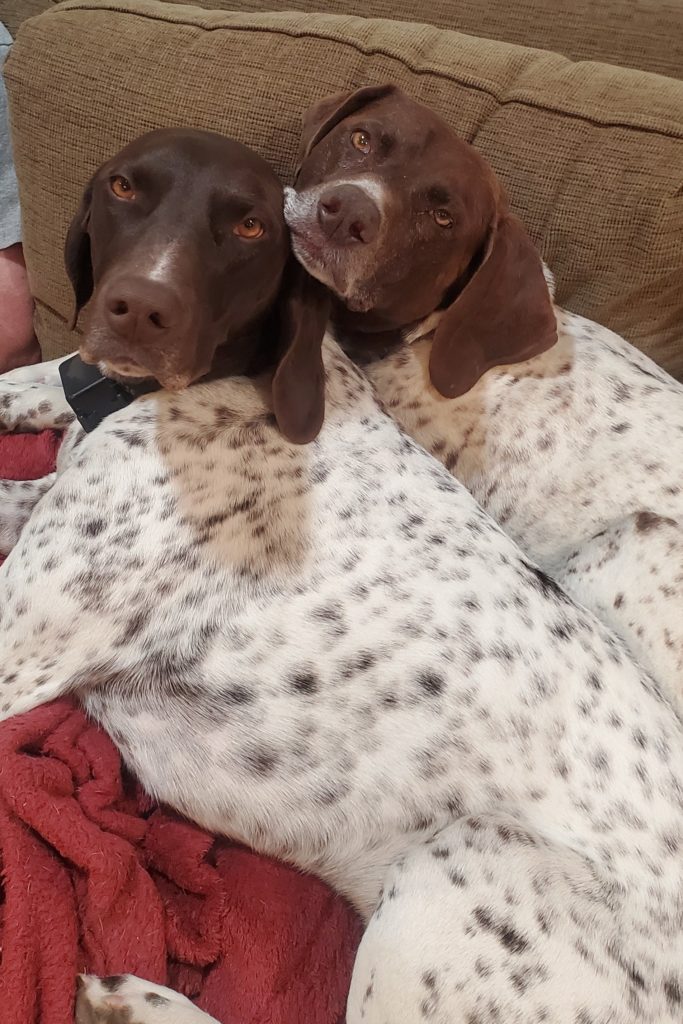At the recent United States Air Force Structural Integrity Program Conference (ASIP) in Austin, TX, Hill Engineering co-authored a presentation titled Development of a Residual Stress Standard. The Aircraft Structural Integrity Program (ASIP) Conference is specifically designed to bring together the world leaders in the area of aircraft structural integrity and to disseminate information on state-of-the-art technologies for aircraft structures in both the military and civilian fleets. Below is the abstract from the presentation along with a link to the full conference slides.
Continue reading ASIP 2021 Presentation: Development of a Residual Stress StandardTag: Hill Engineering
Search results for Hill Engineering blog posts containing the tag hill engineering
HE Pet Spotlight: Saaz and Barley
When we’re not performing residual stress measurements, some of the HE team members love spending time with their furry friends! Josh Hodges is no exception. He lives with his two German Shorthair Pointers, Saaz and Barley, ages 12 and 3 respectively.
Continue reading HE Pet Spotlight: Saaz and BarleySpecial Issue of Experimental Mechanics
We are in the process of organizing a special Issue of Experimental Mechanics, the journal of the Society for Experimental Mechanics. The issue will be devoted to Advances in Residual Stress Technology in honor of Prof. Drew Nelson of Stanford University, for teaching several thousand engineering students about the importance of residual stresses and for developing new optically based approaches for measurement of residual stresses, along with studies of residual stress effects on fatigue. To date, we have accepted proposed paper topics from almost 20 world-leading authors from around the globe.
Continue reading Special Issue of Experimental MechanicsTurbine Engine Technology Symposium 2021
Hill Engineering will be presenting at the upcoming Turbine Engine Technology Symposium (TETS) scheduled for September 15-17, 2021 at the Dayton Convention Center. We invite you to come see us.
The TETS Symposium is a biennial forum where the United States’ turbine engine community gathers to review and discuss the latest turbine engine technology advances. The Symposium draws an audience of approximately 1000 engineers, scientists, managers, and operational personnel from throughout the turbine engine community, including the Army, Navy, Air Force, NASA, DARPA, DOE, FAA, engine and aircraft manufacturers, material and component suppliers, and academia.
Hill Engineering’s presentation will include a summary of recent work related to predicting residual stress and airfoil distortion from shot peening and laser shock peening. The abstract text is presented below.
Continue reading Turbine Engine Technology Symposium 2021BAMpF Rebranding
Hill Engineering completed a rebranding process for our industry leading fatigue analysis software. The process produced a new name, BAMpFTM (Broad Application for Multi-point Fatigue), and a new logo.
Continue reading BAMpF RebrandingRapid Forge Design
Hill Engineering’s Rapid Forge Design™ software is an automated tool for fast and reliable design of 2-piece, closed-die impression forgings. Rapid Forge Design™ reads the final part geometry and automatically designs a forging according to accepted industry guidelines and user inputs. Rapid Forge Design™ is intended for use by forging suppliers and forging consumers/OEMs.
The Rapid Forge Design™ software comes with a user-friendly, graphical interface that allows for forging designs using a simple, 3-step, menu guided approach.
Download a fully-functional demo version of Rapid Forge Design™.
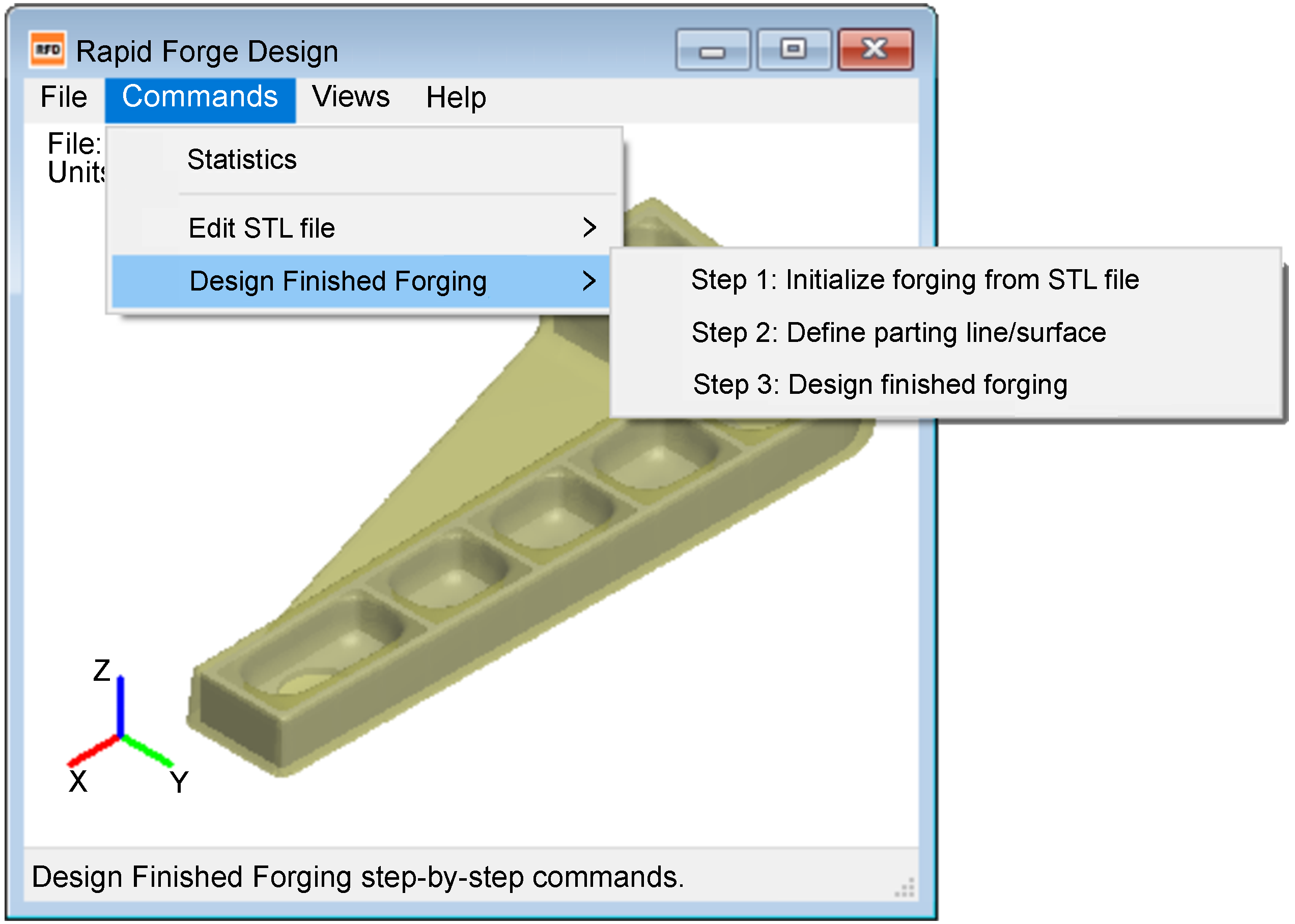
Illustration of Rapid Forge Design™ user interface
The inputs to Rapid Forge Design™ are the 3D geometry of the machined part (to be manufactured from the forging) and critical, user-defined parameters that allow for customization of the resulting forging design (e.g., minimum thickness and minimum radius values).
The forging design is generated by Rapid Forge Design™ according to a set of prescribed, industry-accepted design rules. After the user inputs are provided, the automated forging design process is completed by Rapid Forge Design™ in minutes without any further user intervention. With this approach, Rapid Forge Design™ enables the design of forgings with significantly less effort than existing manual processes.
Rapid Forge Design™ outputs the 3D geometry of the forging and a host of useful forging statistics and properties including volume, plan view area, periphery length, heat treatment section thickness, and other dimensional information. These metrics are essential to support the quoting process (material producers) and planning and costing activities (OEMs).
The preliminary forging designs produced by Rapid Forge Design™ can be used as the starting point for the finished forging’s more detailed design and tooling CAD files.
The Rapid Forge Design™ process is outlined in the flowchart below. The operator can input and customize important design parameters including: web thickness, draft wall cover, draft wall angle, plan view radius, fillet radius, and corner radius. Default values are provided based on alloy dependent industry standards. Help menus provide additional support and guidance, where necessary.
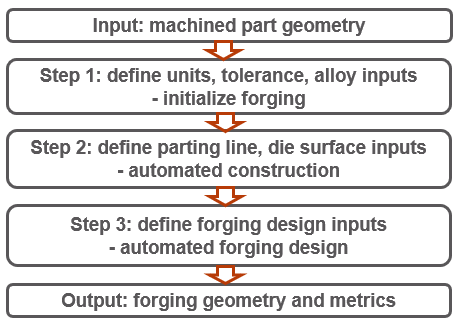
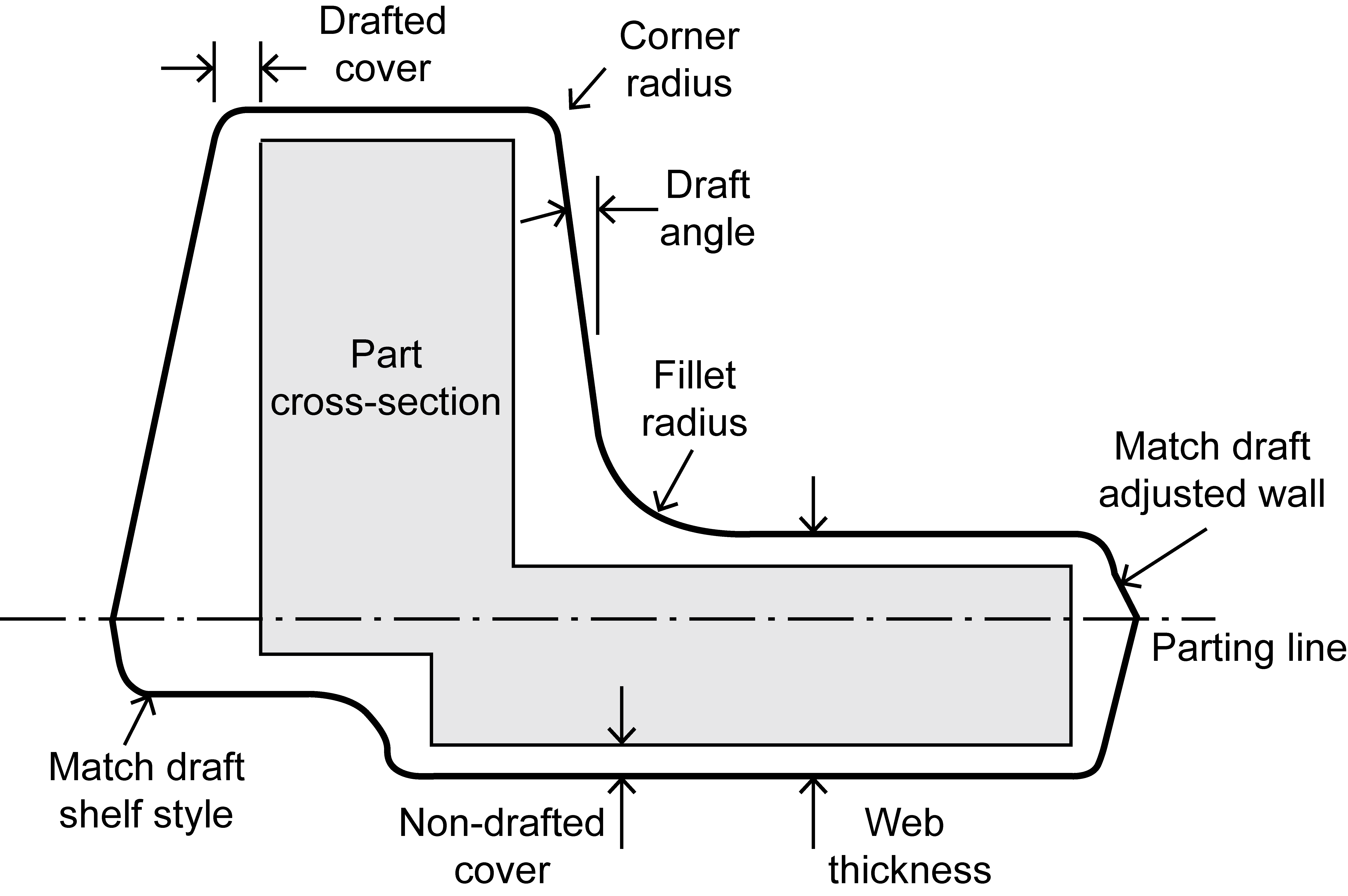
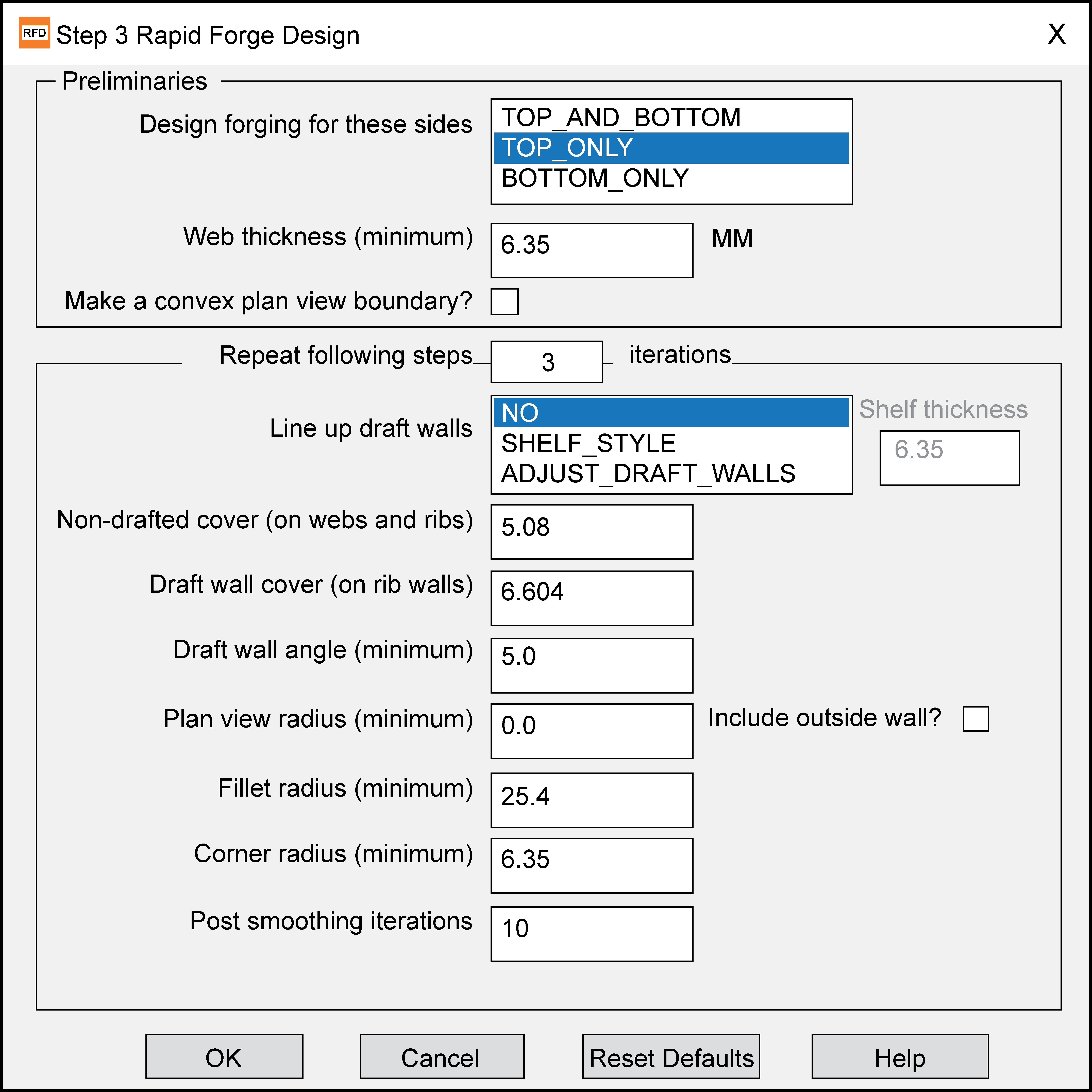
Summary of Rapid Forge Design™ workflow
Numerous examples taken from publicly available CAD files come with the software. The following are a few illustrations showing the ability of Rapid Forge Design™ to effectively produce forging designs for a wide variety of supplied final part geometry.

Illustration of forging designs produced by Rapid Forge Design™ (gold) along with the final machined part geometry that was used as the input for design (grey)
Download a fully-functional demo version of Rapid Forge Design™.
To place an order for Rapid Forge Design™ related goods and services, please contact us.
Case Study: Rapid Forge Design
Hill Engineering’s Rapid Forge DesignTM software is an automated tool for fast and reliable design of 2-piece, closed-die impression forgings. Rapid Forge DesignTM reads the final part geometry and automatically designs a forging according to accepted industry guidelines and user inputs. Rapid Forge DesignTM is intended for use by forging suppliers and forging consumers/OEMs.
Continue reading Case Study: Rapid Forge DesignHE Pet Spotlight: Sir Loin
Unless you’re a sponge living under the sea, you probably don’t have an aquatic snail as your primary pet. That’s not the case in my household, however, where our only non-human friend is Sir Loin, the freshwater ramshorn snail.
Continue reading HE Pet Spotlight: Sir LoinHappy 20th birthday to the contour method
Today marks a major milestone in the field of residual stress measurement. The contour method, one of the most useful and advanced residual stress measurement techniques, was first successfully implemented on this date (August 16th) in 1999 by Mike Prime at Los Alamos National Laboratory. The most significant feature of the contour method is its ability to generate detailed two-dimensional residual stress maps like the one shown below. Please join us in wishing the contour method a very happy 20th birthday! Continue reading Happy 20th birthday to the contour method
Announcing agreement with ESRD for joint BAMF/StressCheck marketing
Hill Engineering and Engineering Software Research and Development, Inc. (ESRD) have executed a joint marketing agreement to collaboratively promote the combined use of our software tools: Broad Application for Modeling Failure (BAMF) and StressCheck® for fatigue analysis. Continue reading Announcing agreement with ESRD for joint BAMF/StressCheck marketing
